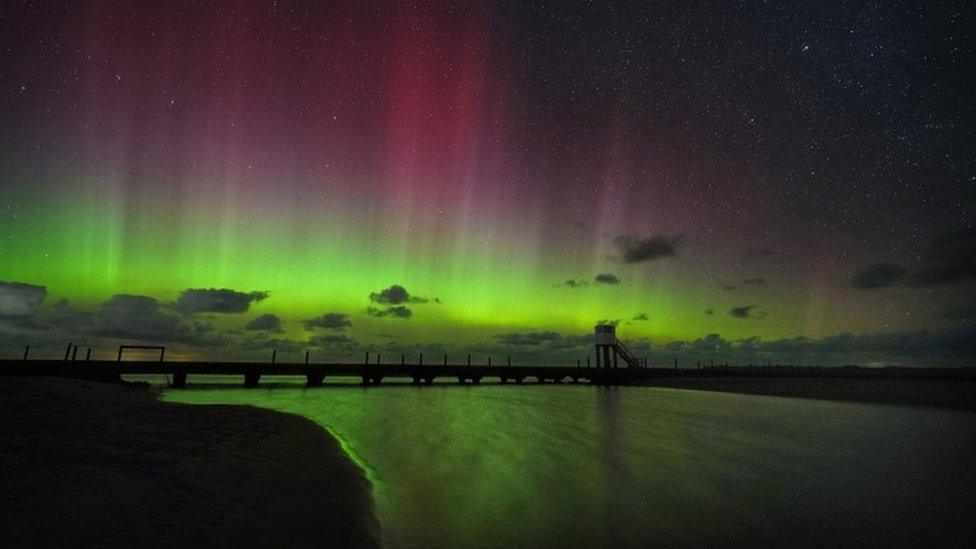Aurora Borealis: Northern Lights to be visible across parts of UK this weekend
- Published
- comments

Calling all stargazers! You might be able to catch a real treat in the skies this weekend!
The Met Office - the UK's national weather service - says the Northern Lights could be visible in the sky across parts of the country for the next couple of nights.
They think the display, also called the Aurora Borealis, could be seen in Scotland, Northern Ireland and areas of northern England if skies are clear.
The phenomenon has already been spotted this week across the UK including as far south as Cornwall, turning skies pink, green and yellow!
What are the Northern Lights?
WATCH: Amazing Northern Lights display in Finland
The lights we see in the night sky are in actual fact caused by activity on the surface of the Sun.
Solar storms on our star's surface give out huge clouds of electrically charged particles. These particles can travel millions of miles, and some may eventually reach the Earth.
The charged particles from the Sun aren't dangerous and move towards Earth's north and south poles.
This is why northern lights - Aurora Borealis - are seen closer to the Earth's north and south pole.
In the southern hemisphere, the phenomenon is called the Southern Lights - or the Aurora Australis.
Different gases give off different colours when they react with the Sun particles in the atmosphere. The green we see in the aurora is oxygen, while hints of purple, blue or pink are caused by nitrogen.
Northern Lights visible earlier this week
The Northern Lights appearing in the skies near Haweswater Reservoir in Cumbria
Professor Don Pollacco, from the University of Warwick, said it is difficult to predict exactly where the Northern Lights would be visible.
He said: "To predict exactly where you can see the Northern Lights is difficult as conditions can change quickly.
"However, one thing is for sure, and that is that you are unlikely to see them from a brightly lit city environment - you need to go somewhere dark and look towards the northern horizon (look for the North Star).
The first vivid aurora of the autumn in Argyll and Bute in Scotland
According to the Met Office, the lights their main hub of activity around the equinox in March and April and again in September and October.
The aurora can happen any time of the year but a major factor to seeing it is having dark skies.
However, don't worry if you haven't managed to see them yet.
Weather experts are predicting that sightings are likely to become more regular over the next few years as we approach the peak in solar activity in 2025.
- Published7 December 2022
- Published30 May 2023
- Published25 April 2023
